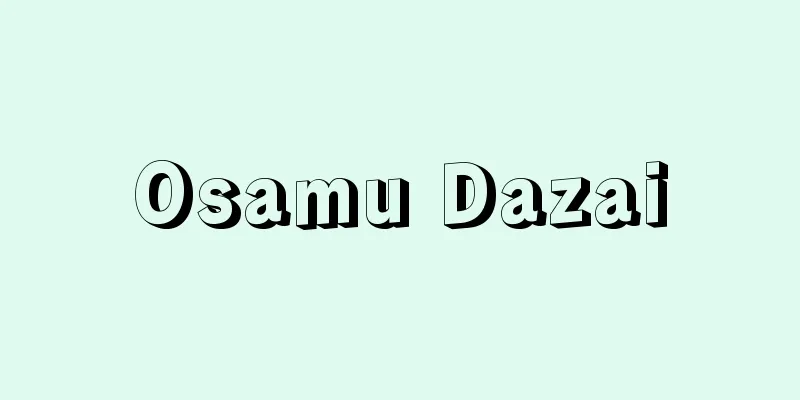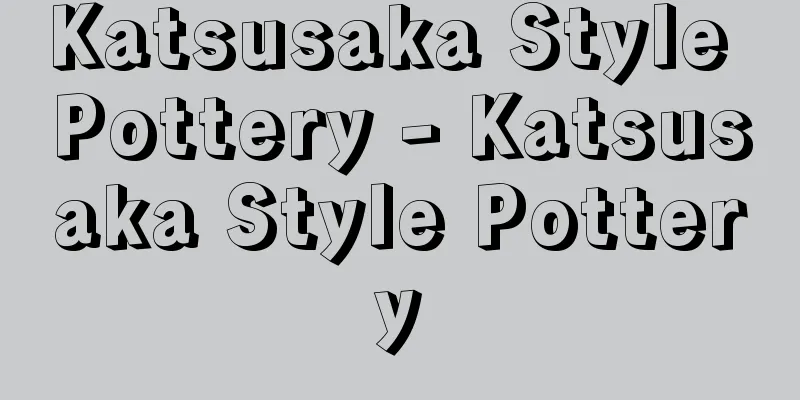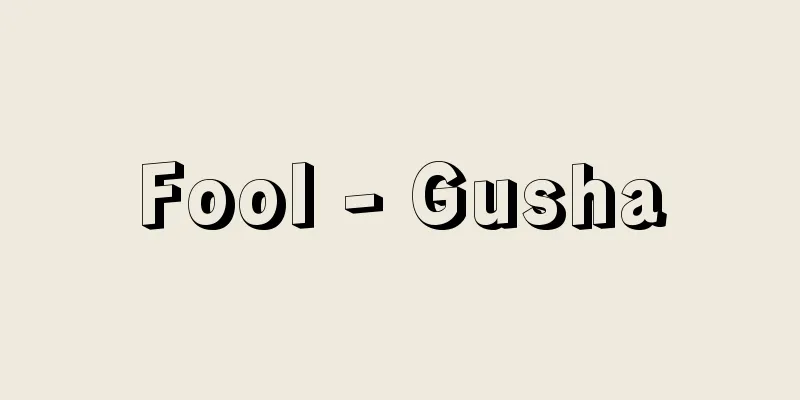Osamu Dazai

|
Novelist. Real name Tsushima Shuji. Born on June 19, 1909 in Kanagi Village, Kitatsugaru County, Aomori Prefecture (present-day Goshogawara City). The Tsushima family was a new landowner and qualified to be a member of the House of Peers as a large taxpayer. He attended Aomori Middle School and Hirosaki High School, before dropping out of the French Literature Department of Tokyo Imperial University. He began publishing coterie magazines in middle school. He started out influenced by Akutagawa Ryunosuke, but in high school he also showed an interest in left-wing literature of the time. After moving to Tokyo in 1930, he was expelled from the branch family by his eldest brother Bunji for his involvement in donating funds to illegal movements, and he committed suicide with a bar waitress at Koyurugigasaki near Enoshima, killing the woman. He was charged with aiding and abetting suicide, but the charges were deferred. After living with Oyama Hatsuyo, a geisha he had known since his days at Koko, he continued his art practice, while also becoming involved in illegal movements by providing them with a hideout. In 1932, at his brother's urging, he turned himself in to the Aomori Police Station, and severed his ties with the left wing. He began to attract attention with the publication of "Gyofukuki" and "Omoide" (both in 1933) in the coterie magazine "Kaihyo." Soon after moving to Tokyo, he studied under Ibuse Masuji, and was eventually sheltered by Sato Haruo. In 1935, with no prospect of graduating from university, he took the entrance exam for Miyako Shimbunsha (the predecessor of the Tokyo Shimbun) and failed, then attempted suicide by hanging in the mountains of Kamakura. Shortly afterwards, he developed peritonitis from appendicitis, which temporarily left him in a critical condition. During treatment, he took a lot of the painkiller Pavinal and became addicted to it. During this time, he was nominated for the first Akutagawa Prize, but was unsuccessful. The following year, he famously wrote to Sato Haruo, who was a member of the selection committee for the prize, "If I win the Akutagawa Prize, I will cry at the human emotions. Then I will be able to fight any pain and live." The works from this period, included in his first collection of creative works, Bannen (1936), are diverse and experiment with various novel writing styles. In works such as Douke no Hana (The Clown's Flower) (1935), he sought a style of writing that would express the anguish of a writer during the period of self-disintegration. While he was hospitalized in a psychiatric hospital to treat his Pavinal addiction, the first author made a mistake and they eventually separated. In 1939, he married Michiko Ishihara and published "One Hundred Views of Mount Fuji," and around that time he entered what is known as a stable middle period. He won the Kitamura Tokoku Prize for his collection of short stories "Joshitei." Many of his wartime works, such as "Kakekomi Utta e" (1940), "Shin Hamulet" (1941), "Tsugaru" (1944), "Shinsaku Shokoku Banashi" (New Interpretation of Various Provinces Banashi) and "Otogi Zoushi" (both 1945), were based on classics and other sources, and he maintained a stronghold in pure literature. After the war ended in his hometown of Tsugaru, he rebelled against the free-thinking that was taking advantage of the current situation, and hoped for a true human revolution, in works such as "Pandora's Box" (1945), "Winter Fireworks" and "Autumn Leaves" (both 1946). After moving to Tokyo, he was in the spotlight of journalism, and wrote "Villon's Wife", "Shayo" (1947), and "No Longer Human" (1948), which earned him the nickname "Burraiha". On June 13, 1948, he committed suicide by jumping into the Tamagawa Canal with Yamazaki Tomie. His birthplace remained as an inn called "Shayokan," but was later purchased by Kanagi Town (now Goshogawara City) and opened as the Dazai Osamu Memorial Museum "Shayokan" in 1998 (Heisei 10). [Kunio Torii] The Complete Works of Dazai Osamu, 12 volumes (1978-1979, Chikuma Shobo) ▽ On Dazai Osamu, by Okuno Takeo (1956, Kindai Seikatsusha, later Kadokawa Bunko) ▽ Appreciation of Contemporary Japanese Literature 21: Dazai Osamu, edited by Aiba Takao (1981, Kadokawa Shoten) ▽ A Biography of Dazai Osamu, by Soma Shoichi, 3 volumes (1982-1985, Chikuma Shobo) ▽ Novels of Dazai Osamu, by Dan Kazuo (1992, Shinbisha) ▽ Recollections of Dazai Osamu, revised and expanded edition, by Tsushima Michiko (1997, Jinbun Shoin) ▽ The Life and Literature of Dazai Osamu, by Nohara Kazuo (Chikuma Bunko) [References] | | |Former Tsushima Family Residence (Nationally designated Important Cultural Property). Goshogawara City, Aomori Prefecture ©Aomori Prefecture "> Dazai Osamu Memorial Museum "Shayokan" Source: Shogakukan Encyclopedia Nipponica About Encyclopedia Nipponica Information | Legend |
|
小説家。本名津島修治(しゅうじ)。明治42年6月19日、青森県北津軽郡金木(かなぎ)村(現、五所川原(ごしょがわら)市)に生まれる。津島家は新興地主で、貴族院多額納税議員の資格があった。青森中学、弘前(ひろさき)高校を経て東京帝国大学仏文科中退。中学時代から同人雑誌を刊行。芥川龍之介(あくたがわりゅうのすけ)の影響から出発したが、高校時代は当時の左翼文学にも関心を示した。1930年(昭和5)上京後、非合法運動にカンパするなどのかかわりをもったことから長兄文治(ぶんじ)に分家除籍され、バーの女給と江の島近くの小動ヶ崎(こゆるぎがさき)で心中を図り、女は死亡。自殺幇助(ほうじょ)罪に問われたが起訴猶予となる。弘高時代からのなじみの芸妓(げいぎ)小山初代(おやまはつよ)と同棲(どうせい)後も習作を続けるかたわら、非合法運動にアジト提供などで関係していた。1932年、兄の勧めで青森警察署に自首、左翼との関係を絶つ。同人誌『海豹(かいひょう)』に『魚服記(ぎょふくき)』『思ひ出』(ともに1933)を発表して注目され始める。上京直後から井伏鱒二(いぶせますじ)に師事し、やがて佐藤春夫にも庇護(ひご)を受ける。 1935年大学卒業の見込みのないまま都(みやこ)新聞社(『東京新聞』の前身)の入社試験を受けて失敗、鎌倉の山中で縊死(いし)を図る。その後まもなく虫垂炎から腹膜炎を併発、一時重態となり、治療中に鎮痛剤パビナールを多用して中毒となる。この間に第1回芥川賞の候補となるが落選。翌年に同賞の選考委員であった佐藤春夫へ向けて「芥川賞をもらへば、私は人の情に泣くでせう。さうして、どんな苦しみとも戦つて、生きて行けます。」という書簡を送った話は有名である。第一創作集『晩年』(1936)に収められたこの時期の作品は、さまざまな小説作法を試みて多彩である。『道化の華』(1935)など、自我解体期の作家の苦悩を表現する文体を模索した。パビナール中毒根治のため精神科病院に入院中に初代が過失を犯し、やがて離別。1939年石原美知子と結婚し『富岳百景』を発表したころから、いわゆる中期の安定期に入る。短編集『女生徒』で北村透谷(とうこく)賞を受賞。戦中の作品は、『駆込(かけこ)み訴(うった)へ』(1940)、『新ハムレット』(1941)、『津軽』(1944)、『新釈諸国噺(ばなし)』『お伽草紙(とぎぞうし)』(ともに1945)などで、古典その他に材を得たものが多く、純文学の孤塁を守った。 故郷津軽で敗戦を迎え、『パンドラの匣(はこ)』(1945)、『冬の花火』『春の枯葉』(ともに1946)などで、時局便乗の自由思想に反発し、真の人間革命を望んだ。上京後ジャーナリズムの脚光を浴び、『ヴィヨンの妻』『斜陽』(1947)、『人間失格』(1948)を書いて無頼派などとよばれた。昭和23年6月13日、山崎富栄(とみえ)と玉川上水に投身自殺する。 生家は旅館「斜陽館」として残されていたが、のちに金木町(現、五所川原市)が買い取り、1998年(平成10)に太宰治記念館「斜陽館」として開館した。 [鳥居邦朗] 『『太宰治全集』全12巻(1978~1979・筑摩書房)』▽『奥野健男著『太宰治論』(1956・近代生活社、のち角川文庫)』▽『饗庭孝男編『鑑賞日本現代文学21 太宰治』(1981・角川書店)』▽『相馬正一著『評伝太宰治』全3巻(1982~1985・筑摩書房)』▽『檀一雄著『小説太宰治』(1992・審美社)』▽『津島美知子著『回想の太宰治』増補改訂版(1997・人文書院)』▽『野原一夫著『太宰治生涯と文学』(ちくま文庫)』 [参照項目] | | |旧津島家住宅(国指定重要文化財)。青森県五所川原市©青森県"> 太宰治記念館「斜陽館」 出典 小学館 日本大百科全書(ニッポニカ)日本大百科全書(ニッポニカ)について 情報 | 凡例 |
<<: Dazai Shundai - Dazai Shundai
Recommend
Decorative Sutra - Soshokugyo
A type of sutra copying that was popular during t...
Miho Shrine
Located in Mihonoseki-cho, Matsue City, Shimane P...
Grands Rhétoriqueurs (English)
…Most of Dufay's chansons, about 70 in total,...
Tvrtko
…He also gained control of Hum (later called Herz...
Dendroaspis
...A general term for extremely dangerous venomou...
Tachibanazono
Scattered fields in Kawabe County, Settsu Province...
Impetus - Impetus
…In this case, force is the cause of motion. Even...
The Great Dictator
American film. Directed by Charles Chaplin. Produ...
Algal mat
...A sedimentary structure consisting of laminae ...
Curitiba (English spelling)
The capital of the state of Paraná in southern Bra...
Gastric mass examination
...For this reason, it is important to have regul...
Nobuki (wild butterbur) - Adenocaulon himalaicum
A perennial plant of the Asteraceae family. It is ...
Tenant farming system
A lease relationship between landless farmers and ...
band
〘noun〙 (band) [1]① A flat string or belt made of l...
Wigeon (scarlet duck) - Wigeon (English spelling)
A bird of the Anatidae family (illustration). It b...









